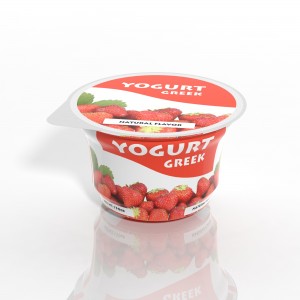
viperagp / Dollar Photo Club
The use of probiotics to positively affect health (and your microbiome) and disease has expanded massively in the past decade.
Supplements, powders, probiotic drinks, juice drinks with probiotic straws–the options are almost limitless. And, if you prefer your prefer your probiotics from the other end, you could sign up for a fecal transplant, although I have to admit that this concept still gives me the creeps.
The strains used, the method used (drink, powder, capsule, etc…) and the number of bacteria in the formulation (usually measured as CFUs, or colony-forming-units) vary widely. VSL-3 dosages can hit a TRILLION (yes–1,000 billion CFUs for someone with an acute episode of Crohn’s or ulcerative colitis) down to a measly few hundred million in yogurt.
But what’s real?
This is not an easy question to answer, but let’s start with some thoughts on this topic:
- Bacteria WILL be destroyed in the digestive process. Some bacteria can handle this quite well, especially if they are in the spore form. Others will never make it past the stomach.
- Bacteria don’t just have to survive the stomach, they have to survive bile acids and pancreatic juices. It’s a rough world down there.
- Your digestive health plays a massive role in this process. Poor digestion will lead to more bacteria surviving the digestive process. But this also means bad bacteria as well. This is why stressed out patients or patients on acid-blocking drugs (think Prilosec, Nexium) have bacteria growing were it is not supposed to be growing in the small intestine (small intestinal bacterial overgrowth, or SIBO).
With all of this in mind, this particular study begins to look at the answer to the question of whether or not the probiotics you are taking actually make it to the large intestine where the bulk of your microbiome resides.
In this study, researchers used simulated digestive environments to mimic stomach acid digestion, bile acid exposure and pancreatic juice exposure on bacteria commonly found in commercially available probiotic formulations. Here are some of the basics:
- Eight different commercial products were evaluated. Of the products tested, not all the products had bacterial strains and numbers that matched the labelling.
- 35 bacterial strains were gathered from the initial screening.
- Principal strains isolated from these commercial products were from Lactobacillus spp. and Bifidobacterium spp.
The sexy details are available by following the links to the study, but here are some details that I found interesting:
- Only 18 of the strains had half of their numbers survive stomach acid digestion.
- After determining which strains were likely to survive the bile acids and pancreatic juices, only 6 Lactobacilllus strains were felt to make it to the large intestine. These included L. casei immunitass, L. casei shirota, L. plantarum, L. pentosus, L. reuterii, L. acidophilus subsp johnsonii and L. delbrueckii subsp bulgaricus.
- Here’s the kicker: Despite a large number of bacteria being added to the large intestine simulator, there was little variation in the overall number of bacteria present over the course of 10 days.
So what’s the take home message here? Supplementation with probiotics remains a good idea. But given that so few of the bacteria are likely to make it to the large intestine and make any kind of notable change, this means that the use of prebiotics becomes even more important. Prebiotics are food or supplements that increase the growth of the bacteria in the gut.
I have covered the effects of the addition of the amino acid glutamine and cranberry extract on the microbiome and these findings are quite interesting. By taking food or supplements that support the growth of the bacteria that we want dominating our large intestine, we can indirectly increase these bacterial counts.
